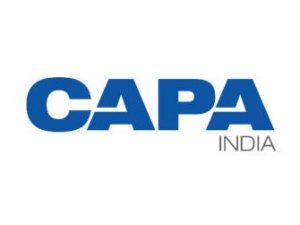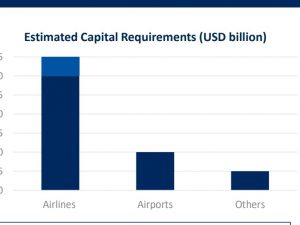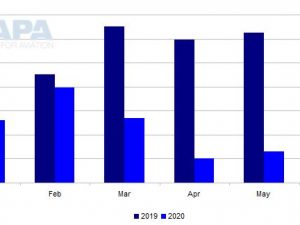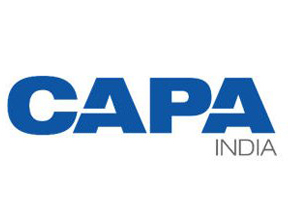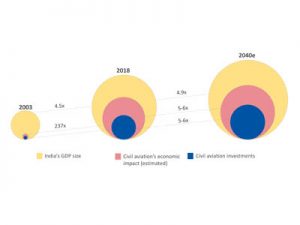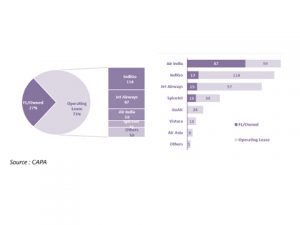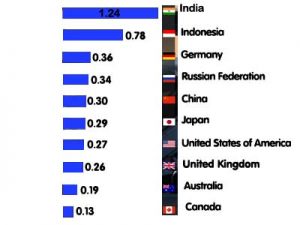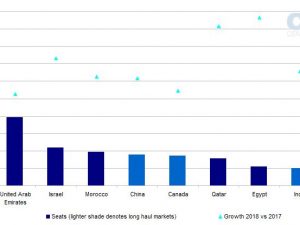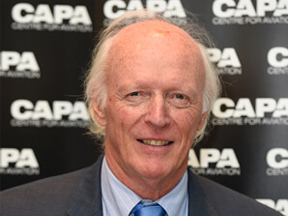At Goa, a new airport should open later this year, one of few during the period of the coronavirus pandemic. As it will be heavily tourist-oriented there will be great interest around the world in how it performs during the winter 2022-23 period – the acid test for the industry’s ‘recovery’ ahead of schedule. The airport is scheduled to begin operation in Aug-2022, said Center for Civil Aviation in a recent report.
Read More »A third of industry experts expect travel to resume to pre-COVID levels after 2023
A new Collinson and Centre for Aviation (CAPA) survey of C-Suite travel industry insiders says a return to ‘normal’ is unlikely before 2023. Over half of travel experts surveyed (51%) expect that robust testing protocols will remain key to reopening global borders until end of 2022. They also believe that a widespread fear of fraudulent tests and vaccine passports may undermine use.
Read More »USD 4.5 to 5 billion of funding required to overcome this crisis: CAPA India
An estimated USD 4.5 to 5 billion of funding will be required to overcome this crisis, mostly for airlines. Excluding IndiGo, the cash position of the industry as on 31-Mar-2020 was just USD 200 million (IndiGo had USD 1.36bn). The current low oil prices and excess liquidity, both globally and in India, would ordinarily have been positive for the sector. But the industry will not be able to fully benefit or raise funds due to structural issues.
Read More »Aircraft deliveries worldwide recover: CAPA
According to CAPA Fleet Database, monthly aircraft deliveries are starting to recover, but remain low. Total deliveries were already falling YoY in Jan-Feb 2020. This fell further in March 2020 by 58%. Although the number doubled from May 2020 to June 2020, it was still down by 60% YoY.
Read More »200-250 surplus aircraft expected over next 6-12 months: CAPA India
According to the latest update by CAPA on the state of the Indian aviation industry, Indian carriers will require a domestic fleet of around 300-325 aircraft from Oct-2020 onwards, and an international fleet of 100-125 aircraft. The total fleet size of 400-450 aircraft would still mean that the current fleet of 650 represents a surplus of 200-250 aircraft for a period of 6-12 months. While a gradual path towards normality could be expected during Q3 and Q4, the Indian aviation sector is likely to shrink significantly, even if some of the vulnerable airlines manage to survive. This estimate may still be conservative and assumes that Q1 FY2021 will be almost written-off, with traffic limping back during the weak second quarter, followed by a gradual trajectory towards normality during the second half of the financial year.
Read More »Indian aviation to impact GDP by 9% in 2040
CAPA’s report titled, ‘Indian Civil Aviation—The USD250 billion Investment Opportunity’, stated that the investments and economic impact growth of Civil Aviation is estimated to continue to outperform GDP growth through 2040. The industry’s economic impact is estimated to have increased from less than 1 per cent of GDP in 2003 to almost 7 per cent of GDP in 2018. It is projected to increase to almost 9 per cent of GDP, or USD1.1 trillion by 2040. The report states that civil aviation has a multiplier effect on the economy through direct, indirect, induced impact. The comprehensive scale and potential of the industry is yet to be covered in totality which prompted.
Read More »More than 70% of Indian aircraft deliveries will be on lease
According to FICCI’s recent report titled ‘Opportunities and Financing Outlook for Aviation Sector’, there will be a huge number of aircraft deliveries in India in the next few years. The report quoted a CAPA study, which estimated that out of 400 aircraft deliveries by FY22 to Indian carriers, 70-80 per cent of them will be either on direct lease or sale and leaseback transactions. To fulfil growing demand, the Government has envisaged huge capex of around US$ 15.5 billion towards development of Greenfield airports, expansion of Brownfield airports, fleet addition & maintenance by Indian Carriers and strengthening ancillary services like skill development, MRO, Cargo handling, amongst others in the value chain. This development plan by airports and airlines requires strong support from Banks, Lessors, Private Equity Firms and other Financial Institutions to cater their funding requirement.
Read More »With 1123 aircraft on order and 620 in use, India has the highest fleet ratio: CAPA
Amongst the 10 largest fleets in the world by country, India has the highest ratio of aircraft on order to aircraft in-service, according to a latest report by CAPA India. In India, for example, the propensity to fly is 0.1 trips per capita today but by 2037 will rise to 0.4, or roughly four times greater. A survey questioned 20,000 people from 18 countries and found that 56 per cent of the people surveyed coming from emerging countries saw themselves first and foremost as global citizens. In India, this figure was 67 per cent. The BBC suggests this is partly because “…the world as a whole is becoming more prosperous and air travel is becoming more affordable to the rising middle classes.”
Read More »Europe-India airline seat numbers grew by 12.9 per cent in 2018
India is only the ninth largest country market outside Europe for international airline seats from Europe in 2018, reports a study by CAPA – Centre for Aviation. However, if North Africa and the Middle East are excluded, India is Europe’s number four long haul market, behind only the US, China and Canada. Among these leading long haul markets, Europe-India seat numbers grew fastest in 2018 versus 2017, with an increase of 12.9 per cent compared with 6.7% for the US, 10.9% for China and 7.3% for Canada. The annual seat capacity from Europe to India has enjoyed strong growth in each of the past two years, increasing by 9.4% in 2017 and 12.9% in 2018. The total number of seats (one way) in this market reached 5.0 million in 2018 (compared with 45 million for Europe-US) – a 30% increase from the low point of 3.8 million in 2013.
Read More »CAPA India Aviation Summit discusses opportunities and challenges of Indian aviation market
CAPA India Aviation Summit, underway in Delhi, saw in presence stalwarts of the aviation industry, including airline heads, airport representatives and stakeholders from around the world. Peter Harbison, Executive Chairman, CAPA – Centre for Aviation, welcomed the delegates and said, “The Indian aviation market has a huge potential and is one of the fastest growing aviation markets in the world. However, there are a few challenges which need to be taken care of. We hope the summit puts across facts and figures that the industry can use for its benefit. We saw a good attendance from major Indian aviation players at the summit and we hope the brainstorming on issues and trends will help the industry at large.”
Read More » Tourism Breaking News
Tourism Breaking News
